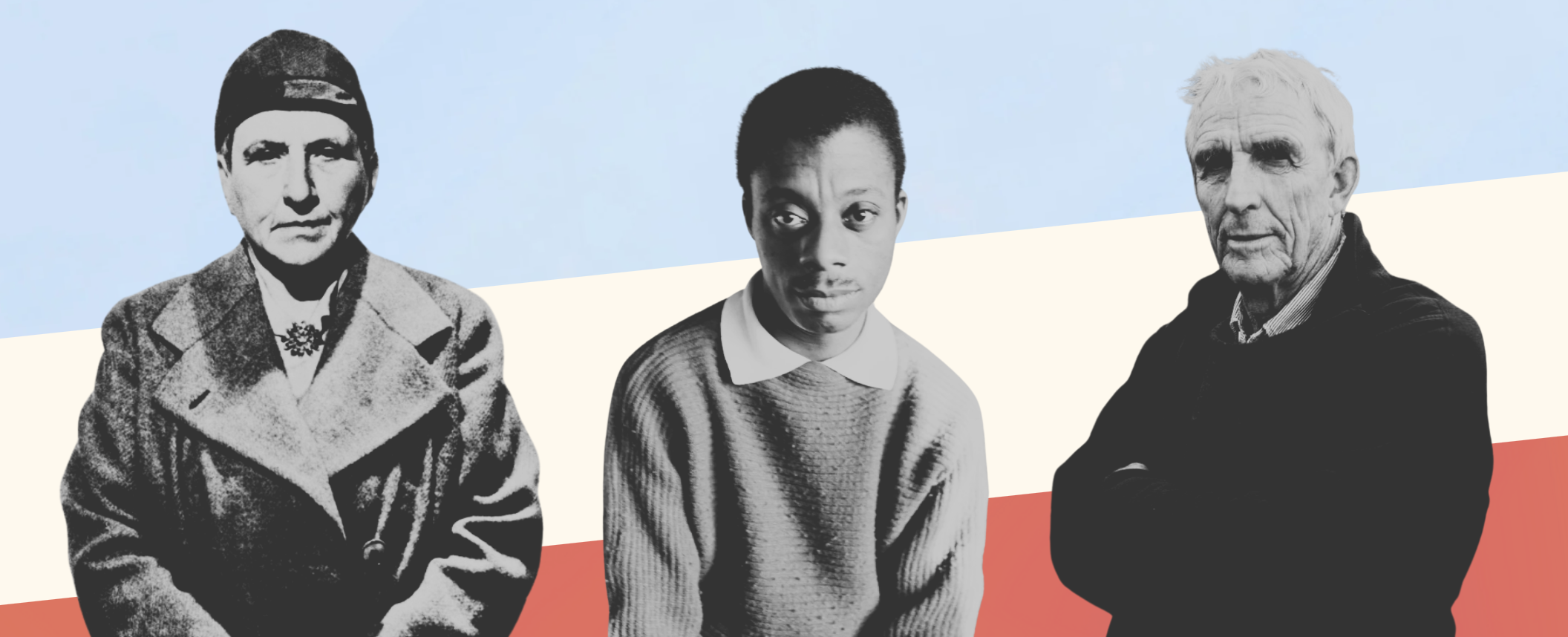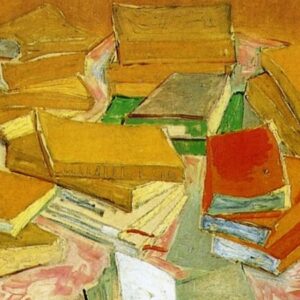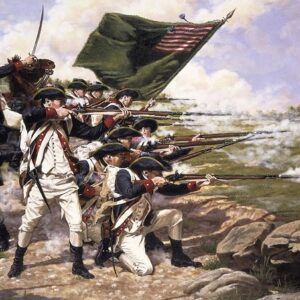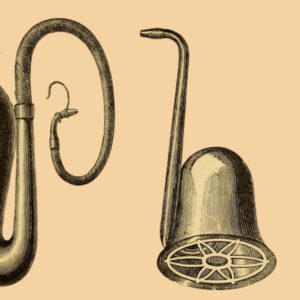
Are We Entering a New Golden Age of Biography?
Megan Marshall on a Trio of Blockbuster Books About Gertrude Stein, James Baldwin, and Peter Matthiessen
A poet friend of mine who specializes in sonnets (just fourteen lines!) recently compared the work of the biographer to long-haul trucking. It takes time. And fortitude, focus, a good sense of direction, deep knowledge of the territory. For these reasons, biography is often a late stage effort, a project to turn to after a career in literary scholarship, journalism, or publishing.
When I started in at the tender age of thirty with a first project in biography that would ultimately take two decades to complete, my mentors were men in their sixties—Justin Kaplan, who’d written prize-winners on Twain and Whitman; Robert Richardson, who’d done Thoreau and was working on Emerson. I organized a writing group of women biographers, but the other members were all at least a decade ahead of me in life and career. I had no peers, and there were few structural supports for the work.
After many tries I landed a fellowship from the National Endowment for the Humanities (NEH), for which I competed with academics on the tenure track and had to identify myself as an “independent scholar.” And then a Guggenheim, against all odds. But there were long years during which my book simmered on the back burner or even cooled on a pantry shelf.
Since then, the prospects for young biographers have improved substantially, and a trio of books published this fall is evidence of the genre’s new flowering. A disclaimer: I’ve met all three authors, thanks to one of the field’s greatest innovations, Biographers International Organization (BIO), founded in 2009 to provide companionship on that long haul with annual conferences and a monthly newsletter as well as support in the form of grants to early stage writers and for research travel. And I’ve served on an advisory board and read applications for some of the new fellowship programs the three have benefitted from. These initiatives have made the community of biographers larger, more collegial, and more youthful.
As I enter my fifth decade in the genre, I’m happy to number the brilliant younger biographers whose careers I’m following in the dozens. Nicholas Boggs, Francesca Wade, and Lance Richardson are just three who happen to be stepping out in the same season with sumptuous new biographies of 20th-century literary giants: James Baldwin, Gertrude Stein, and Peter Matthiessen.
“Biography is a lonely business.”
Or perhaps this didn’t “just happen.” Five years ago, at the height of the Covid-19 pandemic, all three had won the coveted Leon Levy Center for Biography Fellowship, which should have provided them office space and life-writing camaraderie on the sixth floor of CUNY Grad Center in midtown Manhattan. Instead they found themselves Zooming in—Wade from London, Richardson from Austin, Texas, and Boggs from his sister’s pool house in Portland, Connecticut—for monthly workshop sessions led by the center’s Executive Director, Kai Bird, Pulitzer Prize-winning co-author of American Prometheus, the book Christopher Nolan adapted for his blockbuster film Oppenheimer.
The center, founded in 2007 with full funding from the Leon Levy Foundation, contributed by Levy’s widow Shelby White, a biography enthusiast, offers four $72,000 fellowships annually, along with a fifth for a biography in the sciences supported by the Alfred P. Sloan Foundation. The year’s full group included Susan Morrison, author of Lorne: The Man Who Invented Saturday Night Live, published last February, and Miriam Horne, whose Homesick for a World Unknown, on naturalist George Schaller, is due out in April 2026.
All five fellows bonded—a “miracle” under the circumstances, Bird says. The three relative youngsters became especially close in what Boggs calls a “life-changing” year and Wade “a lifeline during the pandemic.” The workshop sessions “deepened my understanding of the form and its possibilities immensely,” says Wade, who’d just published her first book, the acclaimed group biography Square Haunting: Five Writers in London Between the Wars, in 2020 at age thirty. Wade was only beginning her work on Stein; Richardson and Boggs were deeper into their projects. Bird pressed the five fellows to share “raw chapters,” he says, and urged them to “talk to each other frankly but sympathetically.”
Biography is “a lonely business,” says Bird, and the fellows quickly came to value the “rare opportunity to get gentle suggestions”—from Bird, whose focus is “on the larger problems and the mechanics of writing a biography”; from the center’s Associate Director, Thad Ziolkowski, an ace line editor; and from the five fellows with their diverse subjects and varied experience as writers. Now Boggs, Wade, and Richardson are venturing into the maelstrom of publication together, fortified by friendship.
*
I emailed Nicholas Boggs a list of questions in early August as he was looking ahead to a mid-month pub date. Signs were good for the reception of Baldwin: A Love Story, with starred reviews from Publishers Weekly, Booklist, and Kirkus already in hand. There would soon be raves from the New York Times, Washington Post, Boston Globe, Los Angeles Times, and other publications. Such widespread acclaim is rare, and as I learned more about Boggs’s engagement with his subject and read his book, I felt the rightness of the result.
Boggs’s interest in Baldwin was sparked in a college class in 1996; nearly thirty years later, at fifty, he turned in the completed manuscript of the book he’d only slowly come to realize must be a biography. Baldwin, by contrast, had rocketed to fame with the publication of Go Tell It On The Mountain in 1953 at twenty-eight, and his reputation appeared to have been secured with Notes of a Native Son two years later. The books—novel and nonfiction—spoke of hardships he’d endured, the struggle to survive poverty and racism in the United States in the first half of the 20th century.
Another hardship would soon come his way as Baldwin began to write openly about same-sex love. It’s a gross oversimplification of Boggs’s nuanced account to say that the literary establishment failed to support Baldwin following the publication of his novel of a passionate gay love, Giovanni’s Room, in 1956. But Boggs identifies a “narrative of decline” that took hold with critics, even as Baldwin went on to write ten more works of fiction and nonfiction, and that persisted beyond Baldwin’s death in 1987.
What kept him going? As Boggs tells us in the book’s closing lines, “I always knew it was a love story”—both his and Baldwin’s…
The nadir arrived, Boggs writes, with the 1998 publication of a two-volume Library of America edition of Baldwin’s collected writings. It should have been a time of celebration. Instead, New York Times critic Michael Anderson resurrected old complaints that Baldwin’s talents had “all evaporated” and attacked even the early Go Tell It on the Mountain.
Boggs’s work on Baldwin, which began in the late 1990s with a campaign to revive the long out-of-print children’s novel, Little Man, Little Man, paralleled the return of Baldwin’s writing to prominence and his rise to the status of cultural icon. Boggs’s biography, which foregrounds Baldwin’s deepest love relationships, is a moving and eloquent rejoinder to the decline narrative. Making use of unpublished love poems, personal letters, multiple drafts of Baldwin’s writings, and scores of interviews, Boggs gives us what he calls “a far more intimate Baldwin,” while also tracing Baldwin’s development as a writer—effectively twining personal and public selves, as a successful literary biography must do.
Boggs was stunned recently, he says, to be reminded by his eighth-grade English teacher from public school in Washington D.C. that he’d once dressed up in a suit—as a little man—to give a report on Baldwin’s life to the class. Boggs believes now that he’d “repressed” this first go at a biography that would bring him years of “pain and struggle,” with much time spent scrambling for means of support: fellowships from several Baldwin archives; a Robert and Ina Caro Research/Travel Fellowship from BIO; and the Whiting Creative Nonfiction Award, a year-long fellowship established in 2016. What kept him going? As Boggs tells us in the book’s closing lines, “I always knew it was a love story”—both his and Baldwin’s, the reader understands.
*
Francesca Wade discovered a love story—or rather its expansive dimensions, its twists and turns, in the newly available archival documents she photographed at Yale’s Beinecke Library in September 2019. The library closed to researchers six months later, due to the pandemic, but Wade had the material she needed to write Gertrude Stein: An Afterlife, drawing on transcripts of interviews done by Stein scholar Leon Katz with Stein’s partner Alice Toklas following Stein’s death in 1946, but off limits to biographers for nearly three-quarters of a century.
Stein herself was fascinated by biography and practiced it in her own way, believing, Wade writes, quoting Stein, “she ought to be able to discern anyone’s ‘bottom nature,’ to perceive ‘the kind of being in them that makes them.’” Stein’s bestselling nonfiction work, The Autobiography of Alice B. Toklas, which was actually Stein’s autobiography written in Toklas’s voice as rendered by Stein, flipped the genre inside out. Wade’s research in both the Katz transcripts and Stein’s manuscript drafts and journals, annotated with a coded language Wade deciphered, reveals just how much of Stein’s fiction, from the early Three Lives through the decades-long project, The Making of Americans, is reliant on figures in Stein’s family and friendship circles as well. “Facts of life make literature” was one of Stein’s mantras.
Wade divides her book into two parts. The first covers Stein’s life, birth to death, in a narrative with familiar landmarks—Stein’s San Francisco girlhood, years of study at Radcliffe College with William James, self-exile in Paris, friendships with illustrious painters and writers, the adversities of two world wars—yet thoroughly remade with Wade’s fresh insights. Part two delivers the promised “afterlife”: the intertwined stories of shepherding Stein’s vast unpublished works into print after her death, Katz’s strategizing to obtain his interviews, and the careful guarding by archivists and scholars of Toklas’s feelings when manuscripts and interviews revealed an early love of Stein’s that Toklas wished to erase. I’ll say no more! Read the book, due out on October 7.
Wade tells me she was initially attracted to Stein’s “outsized legend.” Plus, there had not been a new Stein biography in thirty years. Wade was soon “beguiled” by Stein’s writing, often dismissed during Stein’s lifetime and beyond as cryptic, opaque, or even a joke on the reader. Wade answers those critics of Stein by placing “writing at the center of her life,” even as she helps the reader to understand how the “writing always emerged from the life.”
“Stein believed in a future where she would be understood and accepted as she wasn’t in her lifetime.”
Along with the Levy Center fellowship, Wade’s work was supported by a year at the Dorothy and Lewis B. Cullman Center for Scholars and Writers at the New York Public Library. Founded in 1999 and for most of its first two decades under the direction of prominent biographers, first Peter Gay and then Jean Strouse, the Cullman Center has often funded the work of biographers (myself included, as I worked on a biography of Elizabeth Bishop in 2014-15). A fellowship at the Radcliffe Institute for Advanced Study at Harvard University followed, permitting Wade an uninterrupted two-year stretch of writing. RIAS, which celebrates its twenty-fifth anniversary in 2025, is led by Tomiko Brown-Nagin, biographer of civil rights lawyer-activist Constance Baker Motley. Like the Cullman Center, RIAS often supports biographers (again, myself included, as I began work on a biography of Margaret Fuller in 2007).
“I think Stein anticipated that both her work and her way of life were ahead of her time,” Wade told me by email. Stein “believed in a future where she would be understood and accepted as she wasn’t in her lifetime.” That future arrived with Gertrude Stein: An Afterlife, which skillfully opens up to our understanding its often misunderstood subject.
*
I studied Gertrude Stein in college, and I’ve read a handful of Stein biographies. I own a first edition Notes of a Native Son, acquired when I worked for the book’s publisher, Beacon Press, in the late 1970s, and I’ve taught Baldwin in writing classes. Dare I confess I’ve never read a word by Peter Matthiessen? Still, I loved Lance Richardson’s True Nature, perhaps all the more because I was getting to know both Matthiessen and his writing from this terrifically absorbing chronicle, due out on October 14. Maybe this is the supreme test of a good biography—can a reader with no previous interest get pulled in?
A biographer aims both to attract new readers and to satisfy hardcore fans, a near-impossible feat that Richardson deftly achieves. His book derives from an early passion for The Snow Leopard, in which Matthiessen “emerges as a kind of mystical naturalist,” Richardson told me by email. “He is not fully convinced by the explanatory capabilities of science; there are things in the world that escape its analytical grasp. So he blends the scientific mindset with religion and belief.” Richardson, who was just beginning his own writing career when a friend turned him on to the book, found this “sensibility” fascinating, “and I wanted to understand how he evolved it.”
Lance Richardson was breaking trail from the beginning, writing a life that had never been written before.
Richardson initially planned to write a travel book—“a hybrid of literary criticism and reportage with some biography thrown in,” he says—in which he would retrace Matthiessen’s journey into the Himalayas that served as the basis for The Snow Leopard. Richardson made the trip, an arduous one, but the more he researched Matthiessen’s life, “the more I realized his biography was quite enough. The rest dropped away.” Matthiessen was a prolific novelist as well as nature writer, a social activist, an advocacy journalist, not to mention a Paris Review founding editor, Zen priest, and onetime CIA operative. Researching so rich and complex a life became Richardson’s true journey, one of epic proportions.
Unlike Boggs and Wade, whose subjects had commanded biographical and scholarly attention for decades, Richardson was breaking trail from the beginning, writing a life that had never been written before. With many of Matthiessen’s closest associates and family members still living, there were countless hours of interviews to conduct and transcribe, manuscript drafts and letters to read in archives and in private hands, the mass of Matthiessen’s published works to gather and absorb. But Richardson would not have it any other way.
“Being ‘the first,’ means that yes, you begin with nothing,” he told me, but “the amassing of research, the construction of a chronology—is the most exciting part of the whole process. I love getting a letter from one archive, finding a letter in another, and seeing how they speak to each other. It’s a bit like exploring a previously undiscovered island.”
Richardson, now 41, devoted most of his thirties to the book. An Australian by birth and upbringing, he has received a Hazel Rowley Literary Fellowship, an award created in memory of the prolific Australian biographer after her death in 2011; a Cullman Center Fellowship; and a Public Scholar Fellowship from the NEH. The Public Scholar Fellowship program, created to support book projects that will reach a general readership, is now in its tenth year. But its future is cloudy.
In February 2025, the Trump administration abruptly cancelled many of the Public Scholar Fellowships awarded under the Biden administration, including one for a biography of Emily Bronte. The Authors Guild has so far successfully contested these revocations in court on first amendment grounds. Unlike the National Endowment for the Arts grants to creative writers, which were terminated in August by the Trump administration, the NEH continues to solicit applications for its Public Scholar Fellowships, but the requirements for subject matter are newly restrictive. The fellowship guidelines read in part:
NEH particularly encourages projects focused on American military history; projects that explore the concept of the American Dream through the lens of economic freedom, entrepreneurship, and innovation; and projects that elucidate the historical and ongoing role of the United States as a leader in global affairs, emphasizing themes of American exceptionalism, moral leadership, and constructive diplomacy.
The grim outlook for federal funding of writers in all genres under the Trump administration highlights the importance of independent grant-giving entities like the Cullman and Levy centers, the Whiting Foundation, and BIO, which recently received a million-dollar gift from veteran biographer Kitty Kelley in part to expand its fellowship offerings. Such institutions need not buckle to the ideological demands of a rogue Chief Executive.
“Thank god for the likes of Leon Levy,” says Richardson, noting also “shrinking industry support”—lower book advances for first-time and mid-list authors. The Levy Center is now home to CUNY’s MA Program in Biography and Memoir (BAM), one of the few in the world, and a gift of $10 million from the Leon Levy Foundation to the center’s endowment fund in 2024, with another $5 million promised in matching grants, has secured the center’s future. In September, the Levy Center moved into larger quarters in CUNY Grad Center, where fellows can browse in a library of 2,000 books for inspiration and guidance. Soon three new books by Boggs, Wade, and Richardson will be sitting on those shelves, opening up, as all “good biographies” do, says Richardson—“little universes: they contain multitudes.”
*
Another confession: in recent years I’d been falling out of love with biography. Was it burnout after decades spent poring over manuscripts and tracking the footsteps of my chosen subjects, for whom I’d sustained (and still do) such passionate attachments? Or was it the increasing awareness, as the community of biographers has pulled together and I’ve grown older: so many lives, so little time to read them?
I enjoyed my email interviews with the younger biographers, but more than that I enjoyed their books. I read them with a feeling of delight I hadn’t often experienced since my own youth, before I chose my first subject, when those “little universes” beckoned me to begin my work. I didn’t mind that Baldwin: A Love Story and True Nature each clocked in at about 600 pages. I wouldn’t have asked the biographers to drop a line, even as I admired Wade’s talent for stylish compression, evident in the mere 384 pages of Gertrude Stein: An Afterlife. I was back in love again.
The prolific biographer Catherine Drinker Bowen once wrote of her work on Chief Justice Oliver Wendell Holmes: “I found myself possessed of a witch’s frenzy to ungrave that man.” Each of the three biographies—any good biography—vibrates with the intensity of its author’s possession by their subject and the thrill of exhumation, if only metaphoric.
More temperately, my long-ago mentor Justin Kaplan summed up the biographer’s task in a 1999 letter to the New York Times: “The challenge to the serious biographer is not to explain the inexplicable by setting up dubious, desperate or fraudulent connections. Rather he should try to render the experience of another person living in a world partly governed by contingency and accident. The question for a good biographer is not why but how: how it felt for the subject of the biography to live his life.”
In an epoch more than usually “governed by contingency and accident,” we need more real-life stories of “how.” Boggs, Wade, and Richardson have given us lives for our time, the very ones some would have erased: diverse in sexuality, race, and social class. It’s not a commonly stated desire these days, but Richardson echoes Kaplan when he says, “I want to see the world through other people’s eyes. Biography helps a writer and his readers get there.” And finally: “The value of writing—not just biography but all writing—is to help each other through.” Readers of a good literary biography are twice blessed. We profit from the subject’s wisdom and art as well as the biographer’s humane, shaping vision.
Megan Marshall
Megan Marshall is the Pulitzer Prize-winning author of Margaret Fuller: A New American Life, Elizabeth Bishop: A Miracle for Breakfast, and The Peabody Sisters, a Pulitzer Prize finalist. Her most recent book is the essay collection, After Lives: On Biography and the Mysteries of the Human Heart.












